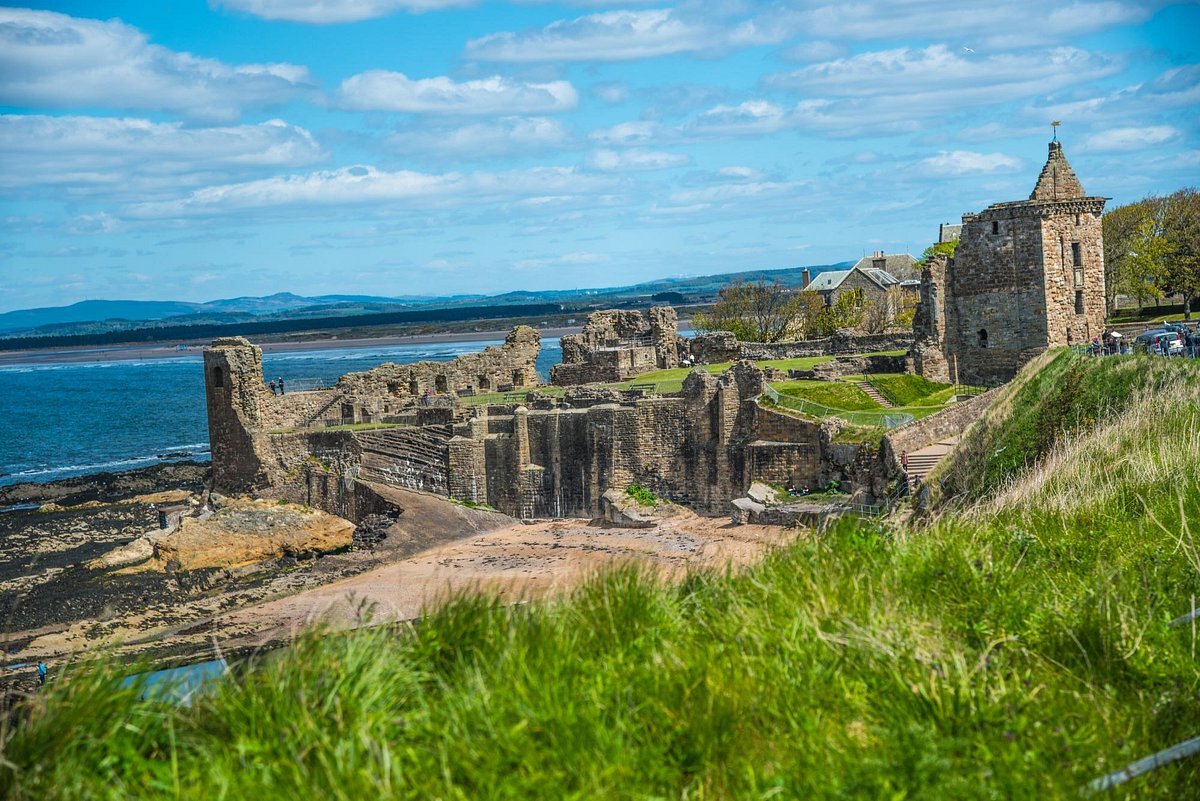
Who was St. Andrew? St. Andrew, one of Jesus Christ's twelve apostles, holds a special place in history and tradition. Known as the patron saint of Scotland, Greece, and Russia, his influence stretches far and wide. Born in Bethsaida, a small fishing village, Andrew was the brother of Simon Peter. He is often depicted with an X-shaped cross, symbolizing his martyrdom. Why is St. Andrew important? His legacy includes spreading Christianity and performing miracles. Celebrated on November 30th, St. Andrew's Day is a time for feasting and festivities. Dive into these 30 amazing facts to learn more about this fascinating figure!
Who Was St Andrew?
St Andrew, one of the twelve apostles of Jesus, holds a significant place in Christian history. His life and legacy have inspired countless traditions and celebrations worldwide.
- St Andrew was born in Bethsaida, a town in Galilee, which is now part of modern-day Israel.
- He was the brother of St Peter, another prominent apostle.
- Before following Jesus, Andrew was a disciple of John the Baptist.
- He is often referred to as the "First-Called" because he was the first disciple to be summoned by Jesus.
- St Andrew is believed to have been a fisherman by trade, working alongside his brother Peter.
St Andrew's Role in Christianity
St Andrew's contributions to Christianity extend beyond his role as an apostle. His influence can be seen in various traditions and practices.
- He is credited with spreading Christianity in Eastern Europe, particularly in regions like Ukraine, Romania, and Russia.
- According to tradition, Andrew was martyred by crucifixion on an X-shaped cross, now known as St Andrew's Cross.
- The relics of St Andrew were moved to Constantinople in 357 AD by the Roman Emperor Constantius II.
- St Andrew's feast day is celebrated on November 30th, marking the beginning of Advent in the Western Christian calendar.
- He is the patron saint of several countries, including Scotland, Greece, and Russia.
St Andrew and Scotland
St Andrew holds a special place in Scottish culture and history. His association with Scotland is celebrated in various ways.
- The Saltire, Scotland's national flag, features a white X-shaped cross on a blue background, symbolizing St Andrew's Cross.
- St Andrew's Day, celebrated on November 30th, is a national holiday in Scotland.
- The town of St Andrews in Fife, Scotland, is named after the saint and is home to the famous University of St Andrews.
- According to legend, St Andrew's relics were brought to Scotland by a monk named Regulus in the 4th century.
- The Order of the Thistle, Scotland's highest chivalric order, is dedicated to St Andrew.
St Andrew's Influence Worldwide
St Andrew's legacy extends far beyond Scotland, influencing various cultures and traditions around the globe.
- In Greece, St Andrew is considered the patron saint of the city of Patras, where he was martyred.
- The Romanian Orthodox Church celebrates St Andrew's Day as a public holiday, honoring him as the protector of Romania.
- In Russia, St Andrew is revered as the patron saint of the Russian Navy.
- The St Andrew's Cross is a prominent symbol in the flags of several countries, including Scotland and Jamaica.
- St Andrew's name is commemorated in numerous churches, schools, and institutions worldwide.
St Andrew in Art and Literature
St Andrew's life and martyrdom have inspired countless works of art and literature throughout history.
- He is often depicted in religious art holding a fishing net or an X-shaped cross.
- The famous painting "The Crucifixion of St Andrew" by Caravaggio portrays his martyrdom in vivid detail.
- St Andrew appears in various literary works, including Dante's "Divine Comedy" and John Milton's "Paradise Lost."
- His story has been the subject of numerous plays, poems, and hymns over the centuries.
- St Andrew's influence can be seen in the architecture of many churches and cathedrals dedicated to him.
Fun and Lesser-Known Facts About St Andrew
Beyond his religious significance, there are many intriguing and lesser-known facts about St Andrew.
- St Andrew is considered the patron saint of fishermen and fishmongers.
- In some cultures, it is believed that unmarried women can dream of their future husbands on St Andrew's Eve.
- The town of St Andrews in Scotland is also famous for its golf courses, particularly the Old Course, one of the oldest in the world.
- St Andrew's relics are said to be scattered across various churches and cathedrals, including St Mary's Cathedral in Edinburgh.
- The St Andrew's Society, founded in 1729 in Charleston, South Carolina, is one of the oldest Scottish heritage organizations in the United States.
Final Thoughts on St Andrew
St Andrew's Day isn't just a celebration in Scotland; it's a global event. From the patron saint of Scotland to his influence in countries like Greece and Russia, St Andrew's legacy is vast. His cross, the Saltire, is a symbol of Scottish pride and heritage. The day itself, November 30th, is filled with festivities, traditional music, and dances. It's a time for Scots to come together and celebrate their culture.
St Andrew's connection to the sea, his role as a fisherman, and his martyrdom add layers to his story. Whether you're Scottish or just love history, St Andrew's Day offers a glimpse into a rich cultural tapestry. So next time November 30th rolls around, take a moment to appreciate the history and traditions that make this day special.
Was this page helpful?
Our commitment to delivering trustworthy and engaging content is at the heart of what we do. Each fact on our site is contributed by real users like you, bringing a wealth of diverse insights and information. To ensure the highest standards of accuracy and reliability, our dedicated editors meticulously review each submission. This process guarantees that the facts we share are not only fascinating but also credible. Trust in our commitment to quality and authenticity as you explore and learn with us.


